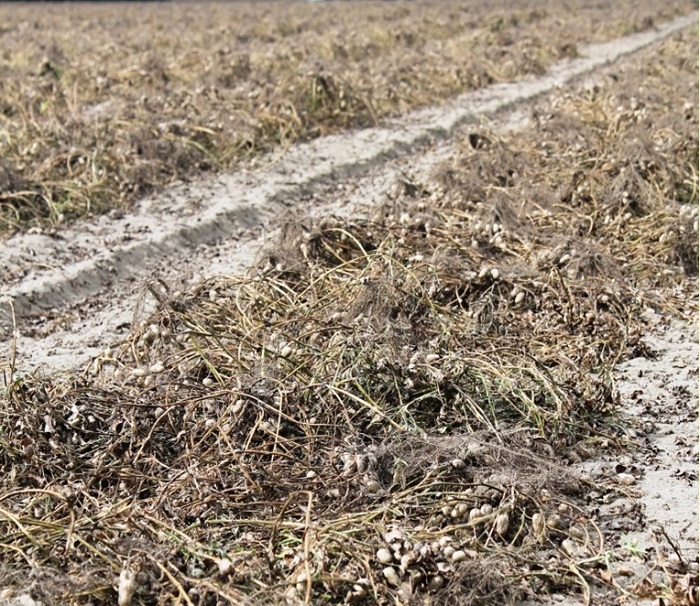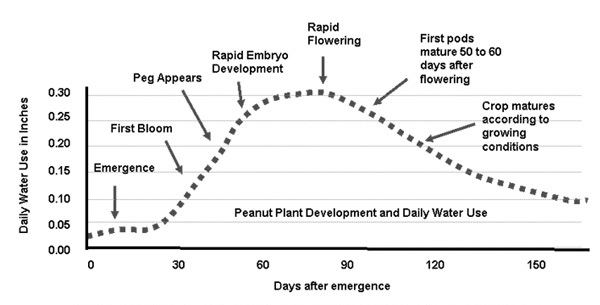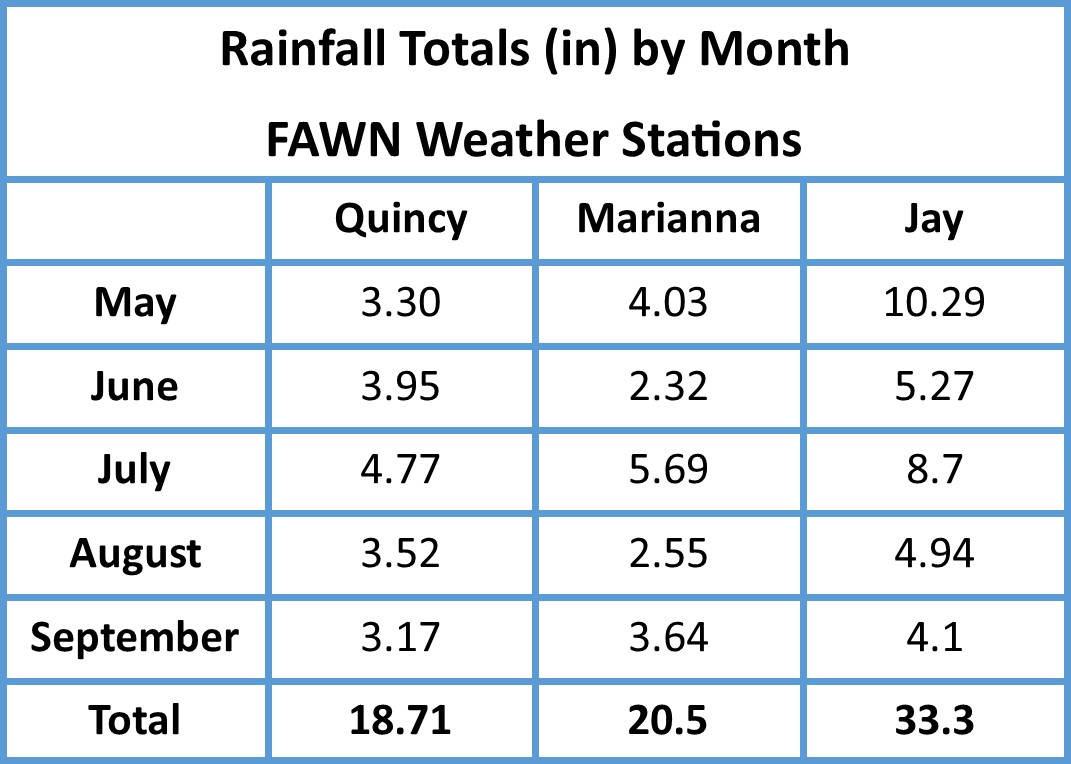
Peanut harvest has begun in Washington County. Inconsistent rainfall this summer means that dry-land farmers need to pay special attention to peanut maturity. Photo Credit: Mark Mauldin
A cold, wet spring got lots of area peanuts off to a late and slow start. When it warmed up and things really got rolling, the rain quit, or at least became very spotty, especially in the Central and Eastern Panhandle. In some cases the timing and amount of rainfall varied a great deal, from field to field, within a relatively small area. This inconsistent rainfall may cause variability in maturity from field to field.
Availability of moisture affects the rate at which peanuts accumulate adjusted growing degree days (aGDDs). aGDDs are a unit used to track the maturity of peanuts. Peanuts accumulate some aGDDs every calendar day; the number of aGDDs accumulated is based on temperature and available moisture. The rate at which aGDDs accumulate increases and decreases as growing conditions improve and decline. Better growing conditions mean more aGDDs accumulated each calendar day.
Acronyms and equations aside, this means that fields that were drought stressed more often, or for longer periods, may take longer to reach optimum maturity than those that experienced less stress. Since this year’s dryland peanut yields have most likely been negatively affected by the “spotty-at-best” rains this summer, it is important to maximize whatever yield potential is left. One way to do that is to make sure that peanuts are harvested at the optimum time. This year that might mean more pod-blasting to make sure each individual field is where it needs to be, maturity wise, prior to harvesting.
A similar concept to keep in mind is that later planted peanuts are likely accumulating aGDDs faster than their earlier planted counterparts. There are two main reasons for this; temperature and timing of water demand. Late planted peanuts were planted into warm soil and higher air temperatures. This enabled them to accumulate more aGDD early in the growing season. Additionally, later planted peanuts have likely had less drought stressed. According to UF/IFAS Peanut Field Agronomic Resource Manager (Peanut FARM), using weather data from the Florida Automated Weather Network (FAWN) station in Marianna, peanuts planted May 1st in sandy loam type soils had insufficient soil moisture for 48 of their 146 days (33% of the growing season). Peanuts planted June 1st in the same soil type had insufficient soil moisture 18 of their 115 days (16% of growing season). The weather has matched up better with the water demands of the later planted peanuts this year.

The water demand of peanuts changes dramatically throughout the growing season. Different planting dates can have a substantial effect on how well rainfall matches water demand. Source: http://soil-testing.tamu.edu/TRMEP/trmscs50.pdf
In short, just because your earlier planted peanuts may be behind schedule, that may not be the case for later planted peanuts. This is just another reason to make sure that you check the maturity of each field prior to digging. Most county Extension offices have equipment needed to check peanut maturity and make a harvest date recommendation. Contact your county’s agriculture agent for assistance.
For more information on peanut maturity:
Peanut Maturity Determination
A Simple, Quick, Inexpensive Peanut Blaster
Determination of Maturity and Degree Day Indices and their Success in Predicting Peanut Maturity. Peanut Science 33:125-136
- Peanut Maturity Update – 10/9/25 - October 10, 2025
- Fall Can be a Great Time for Vegetation Management - October 3, 2025
- Peanut Maturity Update – 9/25/25 Edition - September 26, 2025

